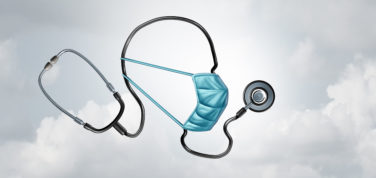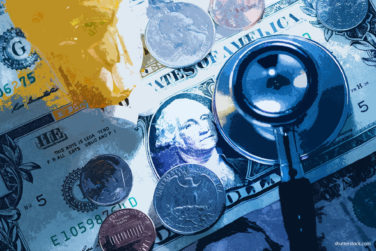Every sales and marketing professional is familiar with the term objection-handling, which is used when customers respond negatively to an idea or product. In some cases this is due to a lack of knowledge or misperceptions that may drive the objection—or another agenda.
During an election time period, objection-handling techniques may be useful because attention inevitably increases on drug costs issues. Two classic ways to address cost objections include providing facts and figures about drug value and probing deeper into concerns with insightful questions. An opportunity presents itself: We can become ambassadors for our industry and to our companies and colleagues by engaging in the debate. In addition, we can provide fact-based perspectives to help change public perceptions.
“The issue of drug pricing has become so politically charged it has the potential to tarnish everyone who works in the industry, whether pricing is part of their remit or not,” says Laura Schoen, President of the Weber Shandwick Global Healthcare Practice. “So knowing how to address it without being defensive, and how to evolve a conversation about price to one about the life-changing value of treatments is everyone’s obligation.”
So, the next time you are asked about drug costs—whether at an industry meeting, a neighborhood party, or dinner with the in-laws—why not use the information below to transform a defensive position to one of knowledge and thought leadership.
1. Start the conversation by noting that our industry offers public and private patient assistance programs to access drugs:
- Since 2005, our industry has helped nearly 9.5 million patients get access to public and private assistance programs through the Partnership for Prescription Assistance (PPA) to maintain access to needed medicines.
2. Underscore that the drugs help patients live longer, healthier lives and drug research creates efficiencies:
- Cancer death rates in the U.S. have fallen 23% over the last two and a half decades and the death rate from heart disease dropped 46% between 1991 and 2011.
- 42% of investigational drugs have the potential to become personalized medicines, which can improve patient outcomes.
3. Explain why prescription medications impact our overall economy:
- The U.S. biopharmaceutical sector supported a total of about 3.4 million jobs in 2011, including approximately 810,000 direct jobs—and generated nearly $800 billion in economic output according to a 2013 study from Battelle Technology Partnership Practice.
- Pharma invests $1 in every $5 spent on domestic R&D by U.S. businesses, which supports nearly 3.4 million jobs across the country, including approximately 810,000 direct jobs.
4. Turn the tables and ask your listeners questions, for example:
Do you think other healthcare gatekeepers are doing their part to keep drug costs down for the consumer?
- Since 2000, biopharmaceutical companies brought more than 500 new medicines to the U.S. market, resulting in significant progress against some of the most costly and challenging diseases. Yet, spending on retail prescription medicines accounts for the same percentage of healthcare spending today is about the same as it was in 1960—just 10%.
- In fact, government actuaries project spending on prescription medicines will continue to grow at a rate that is consistent with overall healthcare spending through the next decade.
- Despite representing a consistent share of spending, prescription medicines are often singled out because insurance covers a lower share of prescription drug costs compared to other medical services.
- On average, patients pay nearly 20% of their total prescription drug spending out-of-pocket, compared to 5% of spending for hospital care. This violates the basic purpose of insurance and is why our focus should be on improving coverage for medicines.
- According to Dan Renick, President of Precision for Value, “For higher cost specialty medications used for treating cancer, Hepatitis C and numerous other life-threatening conditions—in some cases leading to an actual cure—this can be especially burdensome for patients who often are required to pay 33% or more of drug costs up to annual limits, which can be several thousand dollars.”
Did you realize that medicines could shift the treatment paradigm toward prevention?
- The U.S. healthcare system could save $213 billion annually if medicines were used properly (2013 study by the IMS Institute for Healthcare Informatics).
- An extra $1 spent on medicines for adherent patients with congestive heart failure, high blood pressure, diabetes and high cholesterol can generate $3 to $10 in savings on emergency room visits and inpatient hospitalizations.
- Published results (http://bit.ly/1XQoN6d) indicate that although improved medication adherence by people with four chronic vascular diseases increased pharmacy costs, it also produced substantial medical savings as a result of reductions in hospitalization and emergency department use.
5. Close the conversation with an explanation of forces that impact costs:
- The marketplace for prescription drugs is unlike any other part of the U.S. healthcare system. Payers aggressively negotiate prices (including in Medicare) and use their power to incentivize use of lower cost options. A handful of very large and sophisticated pharmaceutical benefits managers (PBMs) account for nearly 81% of all prescriptions in the U.S.
- Over time, medicines go off patent and face additional competition from lower cost generics, which typically cost up to 80% less than the original brand medicine.
- This competitive marketplace explains why the share of healthcare spending toward medicines has remained stable for decades while still providing incentives for the development of new treatments and cures.
Visit www.PhRMA.org/cost to download the “Costs in Context” deck and take crib notes for the next time you go out with a group of friends who don’t work in our industry—and be prepared to defend and delight your audience. Engage in non-confrontational and persuasive communication about the industry’s value and take the opportunity to integrate relevant value facts and figures into diverse communications with internal and external stakeholders.
“We need to put the controversies over the cost of medicine in a larger context so that politicians, the press, and the public fully understand the context and value that new medicines bring to people’s lives and the entire healthcare system,” states John Kamp, Executive Director of the Coalition for Healthcare Communication. “While new drugs are often expensive, they not only help keep people healthy, they often save money by reducing hospital and other care expenses.”






